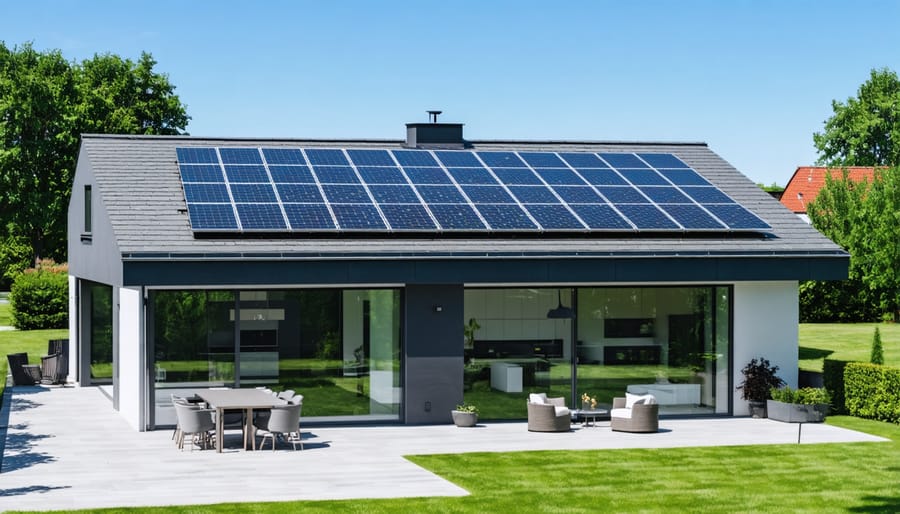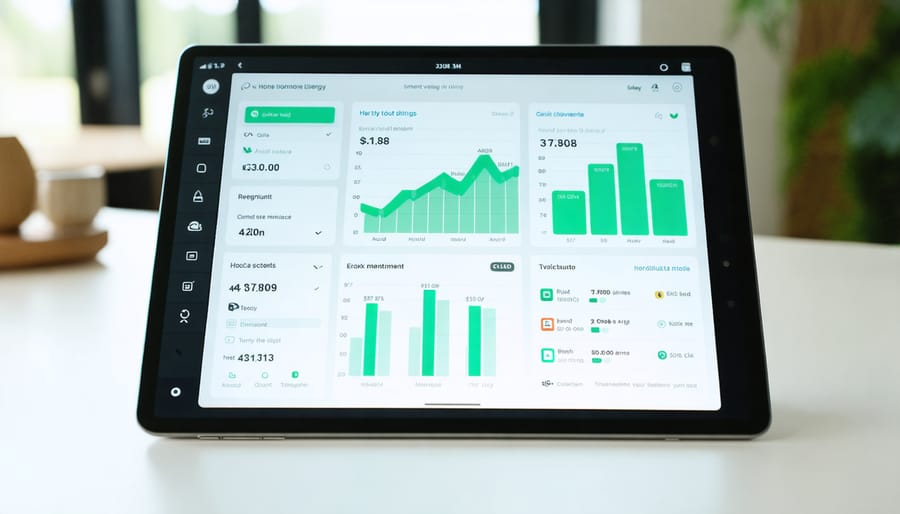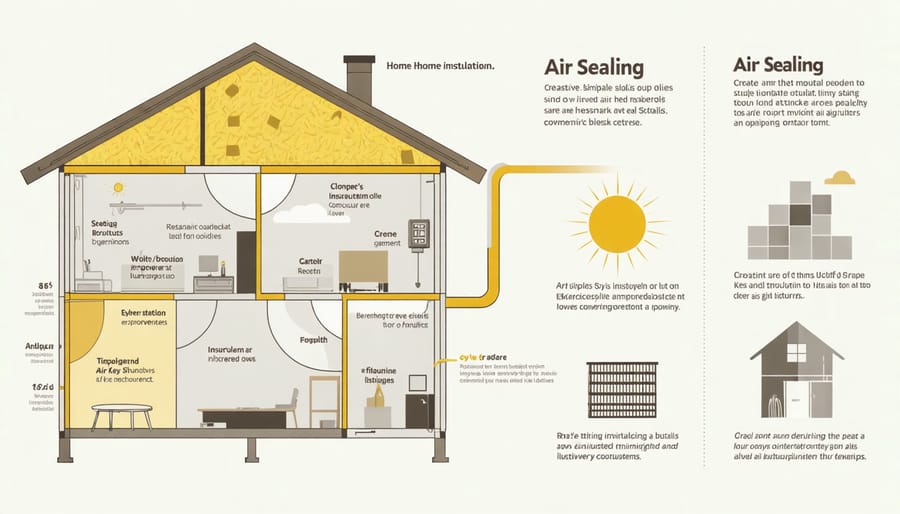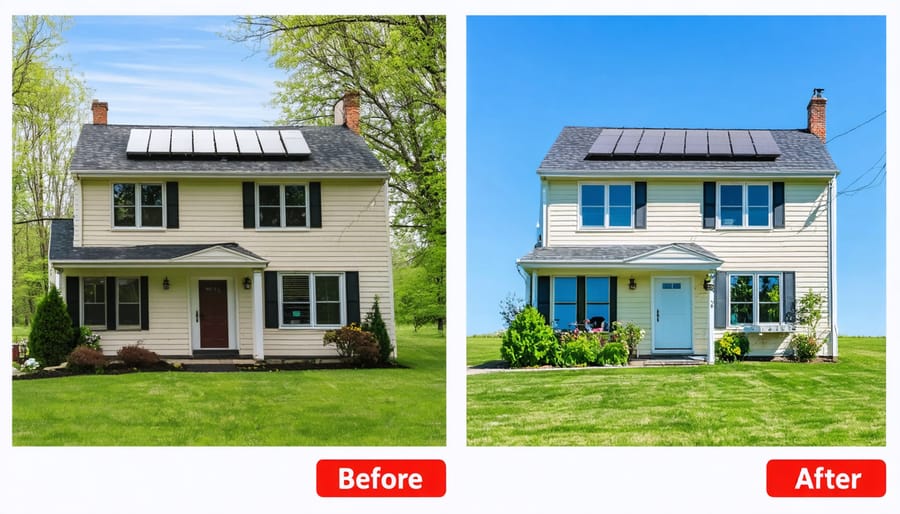Transform your home into a self-sustaining powerhouse by implementing zero-energy housing principles – a revolutionary approach that eliminates energy bills while fighting climate change. Today’s advanced solar technology, smart home systems, and innovative building materials make achieving net-zero energy consumption more accessible and affordable than ever before. Whether you’re building new or retrofitting an existing home, zero-energy housing combines cutting-edge efficiency measures with renewable energy generation to create buildings that produce as much energy as they consume over the course of a year.
Consider this: the average American household spends over $2,000 annually on energy bills, while zero-energy homes can reduce these costs to virtually nothing. Beyond the impressive cost savings, these homes offer superior comfort, healthier indoor air quality, and significantly higher resale values. With governments worldwide introducing stricter environmental regulations and offering generous incentives for sustainable housing, zero-energy homes represent not just an ethical choice, but a smart investment in your future.
This comprehensive guide will walk you through the essential components of zero-energy housing, from super-insulation and airtight construction to solar panel integration and energy-efficient appliances. Whether you’re a homeowner looking to reduce your carbon footprint or an investor seeking to capitalize on the growing demand for sustainable housing, understanding zero-energy principles is crucial in today’s rapidly evolving real estate landscape.

What Makes a Home Truly Zero-Energy?
Beyond Solar Panels
While solar energy solutions are fantastic, they’re just one piece of the zero-energy puzzle. Today’s homeowners have access to an exciting array of renewable energy options that can work together to create a truly sustainable home.
Wind energy systems, though smaller than their commercial counterparts, can be excellent supplements to solar power, especially in areas with consistent breeze patterns. Modern residential wind turbines are quieter and more efficient than ever, making them practical for suburban settings.
Geothermal heat pumps tap into the earth’s constant temperature to heat and cool your home efficiently. While the initial installation costs are higher, these systems can reduce your heating and cooling expenses by up to 70%.
Don’t overlook the potential of biomass energy systems, which can convert organic waste into usable energy. Modern pellet stoves and biomass boilers offer clean-burning solutions for home heating and hot water.
Micro-hydropower systems can be fantastic options for properties with running water sources. Even a small stream can generate consistent power throughout the day and night, complementing other renewable systems perfectly.
The key to success is often combining multiple renewable sources. This approach, known as hybrid systems, ensures reliable energy production across different weather conditions and seasons, bringing you closer to true energy independence.
Smart Energy Management
Modern smart energy management systems are the brains behind zero-energy homes, working tirelessly to optimize your home’s energy use. These intelligent systems monitor and adjust energy consumption in real-time, helping you make the most of every watt.
Think of it as having a personal energy assistant that automatically dims lights in empty rooms, adjusts your thermostat based on occupancy patterns, and even coordinates your appliances to run during off-peak hours when electricity rates are lower. Smart sensors throughout your home collect data about temperature, humidity, and natural light levels, making micro-adjustments that add up to significant energy savings.
You can control everything through a user-friendly smartphone app, allowing you to check your energy usage, adjust settings, and receive alerts about potential energy waste. The system can even learn your preferences over time, automatically creating the perfect balance between comfort and efficiency.
Many homeowners find they can reduce their energy consumption by 20-30% just by implementing these smart solutions, making them an essential component of any zero-energy home strategy.

Essential Design Features for Zero-Energy Success
Insulation and Air Sealing
Proper insulation and air sealing are the cornerstone of any zero-energy home, acting like a cozy blanket that keeps your living space comfortable year-round. Start with the basics: your walls, roof, and foundation should have high-performance insulation materials like spray foam, cellulose, or mineral wool. These materials create a thermal barrier that significantly reduces heat transfer.
But insulation is only half the story. Air sealing is equally crucial – those tiny gaps and cracks throughout your home can add up to the equivalent of leaving a window wide open! Focus on common trouble spots like windows, doors, electrical outlets, and where pipes enter your home. Quality weatherstripping, caulk, and foam sealants are your best friends here.
For optimal results, consider these pro tips:
– Use blown-in insulation for existing walls to avoid major renovations
– Install foam gaskets behind outlet covers on exterior walls
– Pay special attention to attic insulation – it’s where most heat loss occurs
– Consider double or triple-pane windows for better thermal performance
– Use door sweeps and weatherstripping on all exterior doors
Remember, proper insulation and air sealing can reduce your energy needs by up to 50%, making it much easier to achieve zero-energy status. While some tasks are DIY-friendly, complex installations might require professional help to ensure proper implementation and avoid moisture-related issues.

Windows and Natural Light
Windows and natural light play a crucial role in achieving zero-energy status for your home. Strategic window placement and selection can dramatically reduce your energy needs while creating bright, inviting living spaces. South-facing windows are particularly valuable in cold climates, as they capture maximum sunlight during winter months when the sun sits lower in the sky.
When selecting windows, look for double or triple-pane options with low-E coatings. These special glazings help prevent heat loss in winter and heat gain in summer, while still allowing natural light to flood your space. The space between panes is typically filled with argon or krypton gas, providing superior insulation compared to traditional single-pane windows.
Consider installing adjustable exterior shading devices like awnings or pergolas. These allow you to control solar gain seasonally – blocking intense summer sun while welcoming warming rays during winter months. Interior solutions like cellular shades offer additional temperature control while maintaining a clean aesthetic.
Don’t forget about window orientation and size. Large windows on the south side of your home can provide effective passive solar heating, while smaller windows on the north side minimize heat loss. East and west-facing windows should be carefully planned to prevent overheating during morning and afternoon hours.
For optimal results, aim to balance daylighting with energy efficiency. Too much glass can lead to heat loss in winter and overheating in summer, while too little may increase your reliance on artificial lighting. Work with a designer who understands passive solar principles to find the sweet spot for your climate and lifestyle.
HVAC and Water Heating
In a zero-energy home, the HVAC and water heating systems play crucial roles in maintaining comfort while minimizing energy consumption. Today’s modern HVAC technologies offer impressive efficiency gains through smart features like zone control and heat recovery ventilation.
Heat pumps are the stars of zero-energy homes, providing both heating and cooling while using significantly less energy than traditional systems. They work by moving heat rather than generating it, making them up to 300% more efficient than conventional heating methods. For optimal performance, pair them with a well-insulated building envelope and proper sizing for your space.
Water heating typically accounts for about 20% of home energy use, but solar thermal systems can dramatically reduce this consumption. These systems use the sun’s energy to heat water, storing it for later use. When paired with high-efficiency backup systems and smart controllers, they can provide reliable hot water year-round while minimizing energy use.
Remember to maintain these systems regularly – clean filters, check refrigerant levels, and inspect solar panels. Smart thermostats can further optimize performance by learning your preferences and adjusting temperatures automatically. Consider incorporating energy monitoring systems to track your HVAC and water heating performance, helping you identify opportunities for even greater efficiency.
Making the Switch: Practical Steps
Energy Audit First
Before diving into zero-energy modifications, conducting a thorough energy audit of your home is essential. Think of it as getting a health check-up for your house – it helps identify where energy is being wasted and where improvements will have the biggest impact.
Start by collecting your utility bills from the past 12 months to establish your baseline energy consumption. This gives you a clear picture of your current usage patterns and seasonal variations. Next, perform a DIY walk-through inspection of your home, paying special attention to common problem areas like windows, doors, and electrical outlets for drafts.
Consider investing in or borrowing basic energy audit tools like an infrared thermometer, draft detector, or outlet tester. These simple devices can help pinpoint specific issues that might be invisible to the naked eye. Don’t forget to check your insulation levels in the attic, walls, and basement – inadequate insulation is often a major culprit in energy waste.
Make a detailed list of your findings, including:
– Air leaks around windows and doors
– Insulation gaps or compressed areas
– Outdated appliances and their energy ratings
– Lighting efficiency
– HVAC system condition and maintenance history
For the most accurate assessment, consider hiring a professional energy auditor. They have specialized equipment like blower doors and thermal imaging cameras that can provide a comprehensive energy profile of your home. While this involves an upfront cost, the detailed insights can help you prioritize improvements and potentially save more money in the long run.
Remember to document everything – photos, measurements, and professional recommendations will be valuable references as you plan your zero-energy journey.
Prioritizing Improvements
When transitioning to a zero-energy home, it’s essential to approach improvements strategically rather than trying to implement everything at once. Start by conducting a home energy audit to identify where you’re losing the most energy and which energy-efficient home upgrades will give you the biggest bang for your buck.
Begin with the basics: insulation and air sealing. These relatively low-cost improvements can dramatically reduce your energy consumption and create a more comfortable living environment. Next, focus on upgrading to energy-efficient windows and doors, which, while more expensive, offer significant long-term savings and improved comfort.
Once you’ve tackled the building envelope, turn your attention to your home’s systems. Replace outdated HVAC equipment with high-efficiency models, install a smart thermostat, and upgrade to LED lighting throughout your home. These improvements offer quick returns on investment while moving you closer to your zero-energy goals.
Only after addressing these fundamentals should you consider investing in renewable energy systems like solar panels. This approach ensures you’re not oversizing your renewable energy system to compensate for an inefficient home. Remember, every dollar spent on reducing energy consumption typically saves three dollars on renewable energy system costs.
Consider breaking down your zero-energy journey into phases spread over 3-5 years. This timeline allows you to budget effectively, take advantage of seasonal rebates and tax incentives, and adapt your plan based on technological improvements and changing energy prices. Start with projects that offer immediate savings and work your way up to larger investments as your budget allows.
Available Incentives
Making the switch to zero-energy housing is more affordable than ever, thanks to numerous financial incentives available at federal, state, and local levels. The Federal Tax Credit for Solar Energy Systems currently offers a 30% credit on installation costs, making it easier to offset initial energy system costs and savings.
Many states offer additional tax credits and rebates that can be combined with federal incentives. For example, some regions provide property tax exemptions for the added home value from renewable energy installations. Local utility companies often sweeten the deal with rebate programs for energy-efficient appliances and solar panel installations.
Financing options have also evolved to make zero-energy homes more accessible. Energy-Efficient Mortgages (EEMs) allow homebuyers to finance energy improvements as part of their mortgage, while PACE (Property Assessed Clean Energy) programs enable homeowners to finance renewable energy upgrades through property tax assessments.
Don’t overlook utility-sponsored programs that offer on-bill financing, allowing you to pay for energy improvements through your monthly utility bills. Some states also provide low-interest loans specifically for renewable energy projects, with terms ranging from 5 to 15 years.
Remember to check your local government websites and energy offices regularly, as new incentives are frequently introduced, and existing programs may have updated terms or deadlines.
Real Home Success Stories
Meet the Andersons from Colorado, who transformed their 1980s suburban home into a zero-energy marvel. “Our monthly energy bills went from $250 to practically nothing,” says Sarah Anderson. Their journey began with a comprehensive energy audit, followed by strategic upgrades including solar panels, enhanced insulation, and smart home technology. Within two years, their investment paid for itself through energy savings and tax incentives.
In Seattle, the Martinez family proves that even rainy climates can support zero-energy living. Their 1,800-square-foot home now generates 120% of their annual energy needs through a combination of solar panels and geothermal heating. “The key was starting with proper insulation and sealing every possible air leak,” explains Carlos Martinez. Their home maintains a comfortable temperature year-round while contributing excess energy back to the grid.
The Thompson tiny house in Vermont showcases that size doesn’t matter when it comes to zero-energy living. At just 600 square feet, their home uses super-efficient appliances, triple-pane windows, and innovative thermal storage systems. “Living zero-energy in a small space is actually easier,” says Emma Thompson. “We designed everything around efficiency from the start.”
Perhaps most inspiring is the Wilson family’s century-old farmhouse in Michigan. Through careful preservation of historical features combined with modern technology, they achieved zero-energy status without compromising the home’s character. “People don’t believe it when we tell them our 1912 home produces all its own energy,” shares Mark Wilson. Their success involved incorporating solar shingles that match the original roof design and installing a ground-source heat pump that works with the existing radiator system.
These families prove that zero-energy living is achievable across different climates, house sizes, and architectural styles. While each journey was unique, all share common elements: thorough planning, strategic upgrades, and a commitment to sustainable living.

Zero-energy housing represents more than just a trend – it’s a pathway to a more sustainable, cost-effective, and comfortable future for homeowners everywhere. By embracing energy-efficient design, renewable energy systems, and smart home technologies, you can transform your living space into a self-sufficient haven that benefits both the environment and your wallet.
The advantages are clear: dramatically reduced utility bills, increased property value, improved indoor comfort, and a significantly smaller carbon footprint. While the initial investment might seem substantial, the long-term savings and environmental impact make it a worthwhile endeavor.
Whether you’re planning to build a new zero-energy home or retrofit your existing property, every step toward energy independence counts. Start small with basic efficiency improvements, then gradually implement more comprehensive solutions as your budget and circumstances allow.
Remember, creating a zero-energy home isn’t just about personal benefits – it’s about being part of a larger movement toward sustainable living and environmental stewardship. Take that first step today, and join the growing community of homeowners who are leading the way toward a cleaner, more sustainable future.
